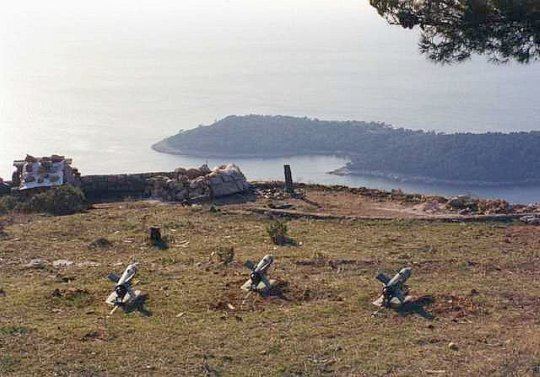Government Republic JNA withdrawal and dissolution 4 May 1992 Founded 1991 | Preceded by Succeeded by Date dissolved 1992 | |
 | ||
President | ||
The Dubrovnik Republic (Dubrovačka Republika) was a territorial entity proclaimed during the Croatian War of Independence on 15 October 1991 in Cavtat after it was captured by members of 2nd Corps of the Yugoslav People's Army (JNA). Its provisional president was Aleksandar Aco Apolonio. The proclaimed territory roughly corresponded to the pre-1808 Dubrovnik Republic's borders, stretching from Neum (Bosnia and Herzegovina's only coastal town) to Prevlaka (on Croatia's maritime border with Montenegro). The International Criminal Tribunal for the former Yugoslavia (ICTY) during the trial of Serbian President Slobodan Milošević, identified the Dubrovnik Republic as being part of several regions in Croatia that Milošević sought to be incorporated into a "Serb-dominated state". The ICTY stated that the JNA's campaign in the Dubrovnik region was aimed at securing territory for this entity.
In January 1992, Serbian nationalist leader Vojislav Šešelj declared his endorsement of a state that included Serbia, Montenegro, Macedonia, Bosnia and Herzegovina, the Republic of Serbian Krajina, and the Dubrovnik Republic within its borders. Šešelj and his Serbian Radical Party endorsed the establishment of the Dubrovnik Republic. The republic was dissolved along with JNA military control of the region after the official dismantling of all JNA forces in Croatia in May 1992.
While it was established with JNA assistance, the Serb government did not issue any statements of support of this government and did not include the republic in their policy discussions. However, the Serbian leadership did desire the incorporation of Dubrovnik into a pan-Serb state, as demonstrated in the diary of Borisav Jović and intercepted communications within Serbian President Slobodan Milošević's inner circle, with the Adriatic border of the pan-Serb state with Croatia being set at the port of Ploče. The Serbian and Montenegrin leadership during the Siege of Dubrovnik had plans to annex Dubrovnik along with the "coastal regions of Croatia between the town of Neum, Bosnia and Herzegovina, in the north-west and the Montenegrin border in the south-east" into Montenegro. As for Ploče, it was decided in November 1991 that the town was to become a territory of Serb-controlled areas of Bosnia and Herzegovina (prior to the Republika Srpska being formed in 1992). Due to the necessity of the use of territory in Bosnia and Herzegovina to launch the invasion of Dubrovnik, Bosnian Serb leader Radovan Karadžić was included in the plans to take Dubrovnik. Days prior to the formation of the Dubrovnik Republic, on 7 October 1991 Karadžić in a telephone conversation said "Dubrovnik needs to be saved for Yugoslavia. Let it be a republic...Some citizens should be found there to decide that when they are liberated". Later that week in a telephone conversation with Gojko Đogo, Karadžić said that Dubrovnik "has to be put under military command and that's it...Dubrovnik was never Croatian!". Đogo responded by declaring that the territory around Dubrovnik needed to be ethnically cleansed, saying: "Burn everything and good bye!...Up north of Dubrovnik River kill everybody!".
During the Siege of Dubrovnik, Serbian and Montenegrin irregular forces and JNA reservists went on a rampage in Dubrovnik; no one was spared in the violence: small villages and farms were plundered, homes and farms were set alight, fires were set to fields and orchards, and livestock was killed. The largely Croat population of Dubrovnik fled in its entirety from the city amid the violence.
Although the JNA had agreed to a cease-fire in January 1992, southern Dalmatia south of Ston was still under the occupation of the JNA 2nd Army's Treblije-Bileća group that was shelling Dubrovnik; JNA involvement officially ended in May 1992 and the group was redesignated as the Bosnian Serb Herzegovinian Corps on 4 May 1992. Although JNA activity officially ended in May 1992, fighting between the Bosnian Serb unit and Croatian army forces continued until 23 October 1992.
